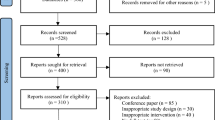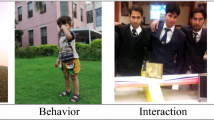Abstract
Children with Autism Spectrum Disorder (ASD) cannot express their emotions explicitly; this makes it difficult for the parents and caretakers associated with these children to understand the child’s behavior, leading to a major setback in the child’s early developmental stages. Studies have shown that a human being’s physiological changes are directly related to his/her psychological reaction. In this paper we propose a wearable wristband for acquiring physiological signals and an algorithm, using a support vector machine (SVM) classifier, that will predict emotional states such as neutral, happy & involvement of children with autism. The psychological reactions (or emotions) are recognized based on the changes in the bodily parameters (physiological basis) such as the galvanic skin response (GSR) and heart rate variability (HRV). For this purpose, vital features extracted from the recorded physiological signals are classified into different emotional states using SVM, which resulted in an overall accuracy of 90 %. This will help the parents and the care takers to understand the emotional patterns of the child better.












Similar content being viewed by others
References
Cacioppo JT, Tassinary LG, Berntson GG. Handbook of psychophysiology. 3rd ed. New York: Cambridge University Press; 2007.
Picard WR. Affective computing: challenges. International Journal of Human-Computer Studies. 2003;59:55–64.
Bal E, Harden E, Lamb D, Van Hecke A, Denver J, Porges S. Emotion recognition in children with autism spectrum disorders: relations to eye gaze and autonomic state. Journal of Autism and Developmental Disorders. 2009;40:358–70.
Castelli F, Frith C, Happe F, Frith U. Autism, asperger syndrome and brain mechanisms for the attribution of mental states to animated shapes. Brain. 2002;125:1839–49.
Carlson NR. Physiology of Behavior. Pearson Education: United States of America; 2007.
Picard RW. Future affective technology for autism and emotion communication. Phil. Trans. R. Soc. B. 2009;364:3575–84.
Kaynak O, Alpaydin E, Oja E, Xu L, Raouzaiou A, Ioannou S, Karpouzis K, Tsapatsoulis N, Kollias S, Cowie R. An intelligent scheme for facial expression recognition. Kaynak, O, Eds. Artificial Neural Networks and Neural Information Processing, Lecture notes in Computer Science, Springer. 2003;2714:1109–16.
Ekman P, Levenson RW, Friesen WV. Autonomic nervous system activity distinguishes among emotions. Science. 1983;221:1208–10.
Busso C, Deng Z, Yildirim S, Bulut M, Lee CM, Kazemzadeh A, Lee S, Neumann U, Narayanan S. Analysis of emotion recognition using facial expressions, speech and multimodal information. Proc. Sixth ACM Int',l Conf. Multimodal Interfaces; New York. 2004;doi:10.1145/1027933.1027968
Hess U, March SB. Facial mimicry and emotional contagion to dynamic emotional facial expressions and their influence on decoding accuracy. International Journal of Psychophysiology. 2001;40:129–41.
Hobson RP, Ouston J, Lee A. Emotion recognition in autism: coordinating faces and voices. Psychological Medicine. 1988;18:911–23.
Pomeranz B, MaCaulay RJB, Caudill MA, Kutz I, Adam D, Gordon D, Kilborn KM, Barger AC, Shannon DC, Cohen RJ, Benson H. Assessment of autonomic function in humans by heart rate spectral analysis. Amer J Physiol. 1985;248:h151–3.
Hoyera D, Friedrich H, Franka B, Pompec B, Baranowskid R, Zebrowskie JJ, Schmidtf H. Autonomic information flow improves prognostic impact of task force HRV monitoring. Computer Methods and Programs in Biomedicine. 2006;81:246–55.
Nakasone A, Prendinger H, Ishizuka M. Emotion Recognition from electromyography and skin conductance. The Fifth International Workshop on Biosignal Interpretation, Tokyo, Japan. 2005;219-222.
Ortony A, Clore G. Collins A. The cognitive structure of emotions: Cambridge University Press; 1988.
Levenson RW. Social psychophysiology and emotion: theory and clinical applications. John Wiley & Sons Ltd. 1988:17–42.
Natarajan K, Acharya R, Alias F, Tiboleng T, Puthusserypady SK. Nonlinear analysis of EEG signals at different mental states. BioMedical Engineering OnLine. 2004. doi:10.1186/1475-925X-3-7.
Jirayucharoensak S, Pan-Ngum S, Israsena P. EEG-Based emotion recognition using deep learning network with principal component based covariate shift adaptation. The Scientific World Journal. 2014. doi:10.1155/2014/627892.
Gunes H, Pantic M. Automatic, dimensional and continuous emotion recognition. Int J Synthetic Emotions. 2010;1:68–99.
Theodore P. Beauchaine, Lisa Gatzke-Kopp, Hilary K. Mead. Polyvagal theory and developmental psychopathology: Emotion dysregulation and conduct conduct problems from preschool to adolescence. Biological Psychology. 2007;74:174–84.
Schupp HT, Junghofer M, Weike AI, Hamm AO. Attention and emotion: an ERP analysis of facilitated emotional stimulus processing. NeuroReport. 2003;14:1107–10. doi:10.1097/00001756-200306110-00002.
Cirfaci G, Billeci L, Tartarisco G, Balocchi R, Pioggia G, Brunori E, Maestro S Morales M.A. ECG and GSR and analysis using wearable systems: Application in anorexia nervosa adolescents. Image and Signal Processing and Analysis (ISPA), 8th International Symposium. 2013; 499–504
Spire technologies, https://www.spire.io/.
Critchley HD, Elliott R, Mathias CJ, Dolan RJ. Neural activity relating to generation and representation of galvanic skin conductance responses: afunctional magnetic resonance imaging study. The Journal of Neuroscience. 2000;20:3033–40.
Liua C, Conna K, Sarkar N, Stone W. Physiology-based affect recognition for computer-assisted intervention of children with Autism Spectrum Disorder. Int. J. Human-Computer Studies. 2008;66:662–77.
Conn K, Liu C, Sarkar N, Stone W, Warren Z. Affective Computing. Austria: ARS/I-Tech Education and Publishing; 2008. p. 365–90.
Dumas M. Emotional expression recognition using support vector machines. International conference on Multimodal Interfaces 2001
Vishwanathan SVN, Narasimha MM. SSVM: a simple SVM algorithm. International Joint Conference on Neural Networks. 2002;3:2393–8. doi:10.1109/IJCNN.2002.1007516.
Burges CJC. A Tutorial on Support Vector Machines for Pattern Recognition. Data Mining and Knowledge Discovery. 1998;2:121–67. doi:10.1023/A:1009715923555.
Ekman P Facial expression and emotion. American Psychologist. 1993;48:384–92. doi:10.1037/0003-066X.48.4.384.
Vapnik VN. Statitical learning theory. New York: Wiley-Interscience; 1998.
Acknowledgment
We would like to express our undying gratitude to the Center for Intelligent Systems, P E S Institute of Technology (PESIT), Bangalore, India for all their support throughout the course of the study. The project was initiated and implemented at PESIT. We also are very grateful to the Academy of Severely Handicapped and Autism (ASHA) Bangalore, India for the constant support and trust endowed upon us. We also thank Prof. Dr. Sathyaprabha, National Institute of Mental Health & Neuro Sciences (NIMHANS) Bangalore, India for her insights on interpreting the physiological signals. We are also thankful to the Department of Child & Adolescent Psychiatry at NIMHANS for providing us with all the necessary resources during the data acquisition phase.
Author information
Authors and Affiliations
Corresponding author
Ethics declarations
Patent
Patent filing has been done (Indian Patent), Application No.: 4808/CHE/2013.
Conflict of interest
All the four authors of this paper, Niranjana Krupa, Karthik Anantharam, Manoj Sanker, Sameer Datta and John Vijay Sagar, declare that they have no conflict of interest.
Ethical approval
All procedures performed in studies involving human participants were in accordance with the ethical standards of the institutional and/or national research committee and with the 1964 Helsinki declaration and its later amendments or comparable ethical standards.
Informed consent
Informed consent was obtained from all individual participants included in the study.
Rights and permissions
About this article
Cite this article
Krupa, N., Anantharam, K., Sanker, M. et al. Recognition of emotions in autistic children using physiological signals. Health Technol. 6, 137–147 (2016). https://doi.org/10.1007/s12553-016-0129-3
Received:
Accepted:
Published:
Issue Date:
DOI: https://doi.org/10.1007/s12553-016-0129-3




